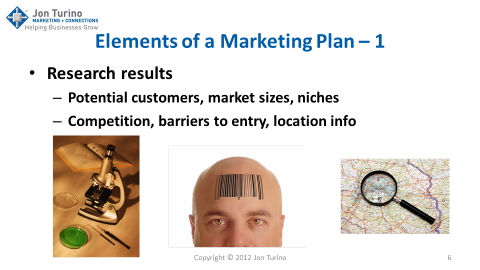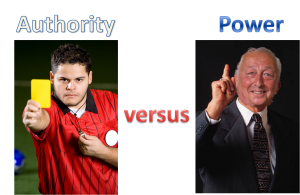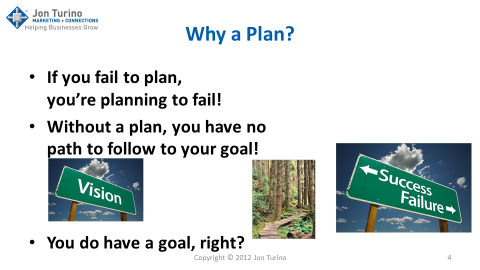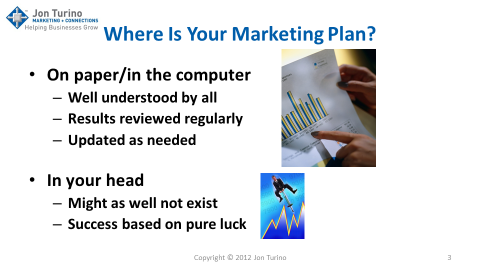I’m going to continue posting the materials from my Udemy.com online course entitled The Marketing Plan Seminar so that my followers can get a feel for the kind of work that I can do for them on a consulting basis. If you can’t wait for the installments to be posted you can order the complete course at http://udemy.com/The-Marketing-Plan-Seminar at any time. In the mean time, I hope you will enjoy each small installment and please do give me a call if doing so triggers something for you where I can be of help with an Instant Strategy Session or working with you longer term with the Monthly Mentoring Mode. Enjoy!

- This image goes with the accompanying video that is part of the online Marketing Plan Seminar. This is slide number 6.
This slide illustrates the first thing that you’ll want to do in developing your marketing plan: market research. Have a look and a listen to this one. The better your research the better your plan will be.
Elements of a Marketing Plan — 1
You’ll want to make sure that you take a real objective look at your markets — people who are really likely to be intersted in what you can supply. You’ll want to estimate the size of your market(s) and segment them into niches where appropriate. “Everyone” is not a well defined target market!
You also need to identify competitors, not only for your product or service but also for the overall dollars that are available from your prospective customers for your type of product or service. Look also at barriers to entry. How expensive is it to enter the market? What regulations or licenses could impact your entry into the market? And what about physical location needs and alternatives if you are considering a brick and mortar based business.
The more complete your research, the better your planning results will be. Don’t skimp on this step!








